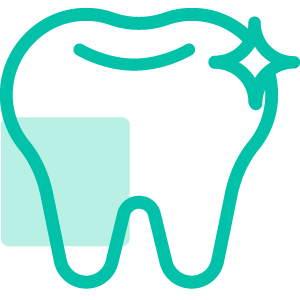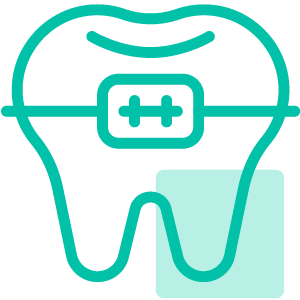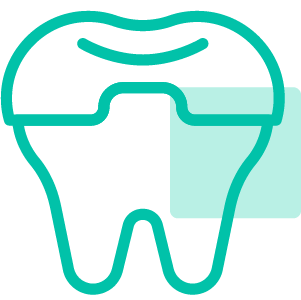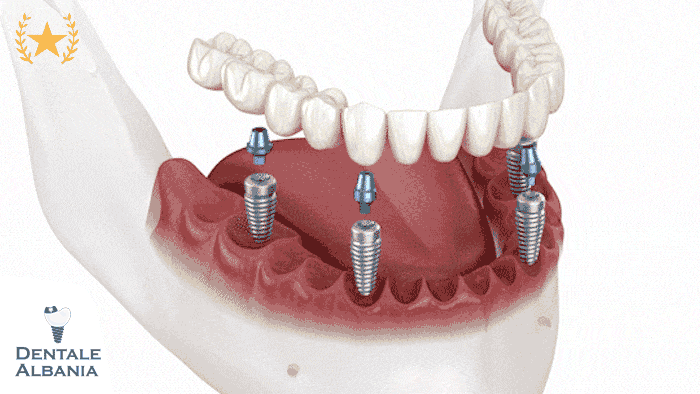Table of Contents
ToggleWhat Are Dental Trauma Guidelines? Understanding Dental Trauma Guidelines for Safer Clinical Decisions
- Dental trauma guidelines are structured, evidence-based recommendations designed to assist dental professionals in diagnosing, treating, and managing traumatic dental injuries in both primary and permanent teeth.
- These guidelines are essential because dental trauma cases often occur in emergencies, and quick, accurate decisions can significantly impact both short-term comfort and long-term oral health outcomes.
- In clinical dental practice, these guidelines provide clarity in chaotic situations, such as managing avulsion, luxation, or crown fractures, ensuring uniform standards of care.
- Two major global resources play a crucial role in this space: the International Association of Dental Traumatology (IADT) and the Dental Trauma Guide. Both institutions have developed comprehensive treatment protocols backed by research and clinical consensus.
- The IADT guidelines offer broad frameworks for handling dental trauma, while the Dental Trauma Guide provides interactive tools and visual aids to assist in real-time clinical decision-making.
- These resources are built through collaborative international panels, synthesizing the latest scientific literature and clinical best practices to support evidence-based dental traumatology.
- Dental trauma guidelines also help standardize patient education, especially for post-trauma follow-up care, which is critical for preventing long-term complications like external inflammatory root resorption or pulp necrosis.
- Ultimately, understanding these guidelines enhances the confidence of general practitioners, endodontists, and pediatric dentists in providing immediate and long-term care for traumatized teeth.
How Are IADT Guidelines and the Dental Trauma Guide Different?
The IADT guidelines and the Dental Trauma Guide are two of the most widely used resources in the field of dental traumatology, each offering valuable but distinct contributions to clinical decision-making. Understanding how they differ — and complement each other — is crucial for providing optimal care to patients with dental injuries.
- The International Association of Dental Traumatology (IADT) is a global organization dedicated to promoting optimal care for traumatic dental injuries. Their trauma guidelines are developed by international panels of experts and reflect the most current evidence-based practices in the field.
- The IADT guidelines are updated periodically — for example, in 2007 and more recently in 2020 — to incorporate new scientific data and advancements in treatment approaches.
- These guidelines cover a broad spectrum of injuries, including fractures, luxations, and avulsions, and they recommend specific diagnostic and treatment protocols for each case based on tooth maturity, injury severity, and time since trauma.
- The Dental Trauma Guide, on the other hand, is an interactive digital tool developed by the University Hospital of Copenhagen. It provides step-by-step management for specific trauma scenarios using a visual interface, which is especially helpful for practitioners in emergency settings.
- Unlike the IADT guidelines, the Dental Trauma Guide focuses on case-based navigation, making it easier to simulate real clinical cases with input fields for injury type, time elapsed, and root development stage.
- The Dental Trauma Guide offers detailed timelines for follow-ups, radiographic monitoring, and when to initiate endodontic treatment or consider extraction.
- While the IADT guidelines are authoritative and consensus-driven, the Dental Trauma Guide shines as a hands-on treatment assistant, helping clinicians apply the theory to practice.
- For the best outcomes in dental trauma management, clinicians are encouraged to use both: the IADT guidelines as a framework and the Dental Trauma Guide as an execution tool.
Which Topics Do the IADT Trauma Guidelines Cover?

The IADT trauma guidelines provide comprehensive recommendations for managing a wide range of dental injuries, ensuring that clinicians can respond appropriately to each scenario. These guidelines are designed to standardize care, reduce treatment errors, and improve outcomes for patients of all ages. Below, we break down two of the most critical categories they address.
What Do the IADT Guidelines Say About Luxation and Fracture Injuries?
Luxation and fracture injuries are among the most common forms of traumatismo dental, especially in young individuals. The IADT provides clear protocols for evaluating and treating these injuries.
- Luxation injuries include concussion, subluxation, lateral luxation, intrusion, extrusion, and avulsion. Each has distinct clinical presentations and management strategies.
- Fracture types include enamel infractions, uncomplicated crown fractures, complicated crown fractures, root fractures, and crown-root fractures.
- Clinical evaluation typically involves checking tooth mobility, percussion sensitivity, and displacement, while radiographs help confirm the type and extent of the injury.
- Treatment may involve repositioning the tooth into its original socket, splinting for a period of 2–4 weeks, or even extraction in cases of severe trauma or poor prognosis.
- The IADT emphasizes early intervention and regular follow-up visits to assess healing, pulp vitality, and to detect complications such as pulp necrosis or root resorption.
What Do the IADT Guidelines Say About Avulsion Injuries?
Avulsion injuries, where a tooth is completely displaced from its socket, are dental emergencies that require rapid action and precise treatment.
- Immediate action at the accident scene includes retrieving the tooth by the crown, rinsing it with saline or milk, and replanting it within 5–60 minutes if possible.
- Dry time and root development stage (open or closed apex) are critical factors in determining the likelihood of successful replantation.
- Once replanted, the tooth should be stabilized with a flexible splint, and the patient should begin antibiotic therapy (e.g., doxycycline) and confirm their tetanus vaccination status.
- The IADT outlines exact timelines for follow-up evaluations, which include vitality testing, radiographs, and assessments for complications like external inflammatory root resorption.
- Long-term prognosis depends heavily on immediate management, proper splinting, and compliance with follow-up care.
How Do Dental Trauma Guidelines Change Based on Tooth Maturity?
Dental trauma guidelines emphasize the importance of tooth maturity—whether the tooth has an open (immature) apex or a closed (mature) apex—as a fundamental factor in determining treatment. The approach varies significantly because the goals of treatment differ depending on the stage of root development.
What Should Be Done for Immature (Open Apex) Permanent Teeth?
For immature teeth, preserving pulp vitality is critical to allow continued root formation and apex closure.
- The priority is vital pulp therapy such as indirect pulp capping, direct pulp capping, or partial pulpotomy depending on the severity and extent of the trauma.
- The goal is to promote continued root development and prevent early closure, which could lead to thin root walls and susceptibility to fracture.
- In the case of luxation or avulsion, decisions about replantation must take into account the risk of damage to the Hertwig’s epithelial root sheath, which is essential for root growth.
- The IADT recommends careful radiographic monitoring every few weeks initially, and then annually for several years.
- Risks such as pulp necrosis and external inflammatory root resorption are higher in open apex teeth, so early diagnosis and prompt treatment are key.
What Should Be Done for Mature (Closed Apex) Permanent Teeth?
Treatment for mature teeth focuses on preserving the tooth and preventing or managing pulpal and periapical pathology.
- Because root development is complete, the focus shifts toward maintaining tooth function and addressing pulpal complications that may follow trauma.
- Root canal therapy is often indicated, especially if there are signs of pulp necrosis or inflammatory resorption.
- Timing is essential—endodontic treatment should ideally start within 7–10 days post-trauma for teeth that are at high risk of complications.
- Splinting is usually necessary for luxated or avulsed teeth. The IADT recommends a flexible splint for 2 weeks, extended to 4 weeks for root fractures or severe luxations.
- Long-term follow-up is necessary, including periodic radiographs to assess healing and identify late complications such as resorption or ankylosis.
What Are the Dental Trauma Guidelines for Primary Teeth?
Management of dental trauma in primary (baby) teeth is fundamentally different from that in permanent teeth. The goal is not just to treat the injured tooth but also to protect the developing permanent tooth bud underneath. Therefore, treatments are generally more conservative and guided by risk-benefit analysis.
What Treatments Are Recommended for Primary Tooth Luxation or Fracture?
Luxations and fractures in primary teeth require careful consideration due to their proximity to permanent successors.
- Minor injuries like concussions or subluxations typically require no active treatment, just observation.
- If the tooth is mobile but not displaced, a soft diet and monitoring may be sufficient.
- For displaced teeth, decisions depend on the direction of displacement. Intruded teeth are usually left to re-erupt spontaneously unless impinging on the permanent tooth germ.
- If the tooth is luxated toward the labial bone and causing pain or occlusal interference, extraction is often recommended.
- Fractured crowns with no pulp exposure may be restored using glass ionomer cement or composite resin, while those with pulp involvement might need pulpotomy or extraction depending on the extent and child’s cooperation.
- Guidelines stress the importance of clinical and radiographic follow-up at regular intervals to detect late complications such as pulp necrosis or infection.
Are Avulsed Primary Teeth Ever Replanted?
Replantation of primary teeth is contraindicated and should never be performed.
- The risk of damaging the permanent tooth germ is too high to justify the procedure.
- Replanting may result in ankylosis, infection, or disruption of eruption patterns for permanent successors.
- Instead of replantation, the focus should be on wound management, pain control, and parent counseling.
- Parents should be reassured about the normal eruption sequence of permanent teeth and given guidance on signs of potential complications.
- Follow-up should include periodic exams and radiographs to ensure no pathological changes are developing in the surrounding tissues.
What Is the Dental Trauma Guide and Why Should You Use It?
The Dental Trauma Guide is an internationally recognized evidence-based tool designed to help clinicians make informed decisions when treating dental injuries. Developed by leading dental trauma experts, it offers interactive access to treatment protocols, visual resources, and clinical decision trees for both primary and permanent teeth.
- The platform includes step-by-step case management pathways based on tooth type, injury classification, and patient age.
- It covers luxations, fractures, avulsions, and root resorption, with separate guides for open vs. closed apex teeth.
- Each case scenario includes visual diagrams, clinical images, and time-sensitive interventions, making it especially helpful in emergency situations.
- It promotes best practices in traumatology, reflecting the most current IADT recommendations.
- Available in multiple languages, the Dental Trauma Guide is used by dentists, endodontists, and pediatric specialists across the world.
- It is frequently updated to align with new scientific findings, consensus statements, and clinical guidelines (e.g., IADT 2020).
- The tool is also an excellent educational resource for dental students and general practitioners, enhancing both learning and decision-making confidence.
- Its intuitive structure allows for quick referencing in real-time clinical scenarios, making it particularly valuable in time-critical trauma management.
Whether you’re a student, general dentist, or specialist, the Dental Trauma Guide equips you with the clarity and structure necessary to manage trauma cases systematically and effectively.
What Are the Best Resources for Learning About Dental Traumatology Guidelines?
For dental professionals aiming to stay updated with the latest evidence-based practices in dental trauma care, several trusted resources provide access to comprehensive guidelines, expert commentary, and ongoing research in the field of dental traumatology.
- International Association of Dental Traumatology (IADT):
- The IADT publishes the globally recognized IADT Guidelines, with the latest updates available online.
- They also offer access to webinars, case discussions, and continuing education materials related to dental trauma guidelines.
- Dental Trauma Guide:
- As covered in the previous section, this interactive platform developed in Denmark is one of the most cited and respected digital tools for trauma management.
- It provides a visual and structured approach to managing both primary and permanent tooth injuries.
- British Dental Journal (BDJ) and BDJ Team:
- The BDJ and its companion publication BDJ Team regularly publish accessible and peer-reviewed clinical articles on dental trauma management.
- Examples include “A Step-by-Step Guide to Managing Dental Trauma in General Practice,” which outlines trauma protocols for day-to-day practice.
- PubMed:
- A comprehensive database for research articles, including key publications like:
- Bourguignon et al., 2020 – Focused on fractures and luxation injuries.
- Fouad et al., 2020 – Addressing avulsion injuries and their management.
- Ideal for staying current with clinical studies, reviews, and expert opinions on dental trauma.
- A comprehensive database for research articles, including key publications like:
- National Clinical Guidelines and Hospital Protocols:
- Institutions like The Royal Children’s Hospital Melbourne and others publish their own guidelines for trauma management in pediatric patients.
- These protocols often adapt IADT recommendations to suit regional clinical settings.
- Continuing Education Courses:
- Many dental schools and trauma organizations offer certified traumatology courses.
- These may include simulations, hands-on training, and case-based learning, enhancing the understanding of trauma guidelines in clinical contexts.
Whether you’re seeking formal guidelines, peer-reviewed literature, or practical courses, these resources will provide the foundation and tools necessary to deliver high-quality trauma care aligned with international standards.
How Are Fractures and Luxations Classified and Managed in Guidelines?
Understanding how dental trauma is classified is critical for diagnosis, treatment planning, and long-term prognosis. The IADT trauma guidelines and resources like the Dental Trauma Guide offer detailed classifications that assist clinicians in selecting appropriate care pathways.
- Fracture Classification According to IADT:
- Enamel Infractions: Hairline cracks without tooth structure loss; typically require no treatment but monitoring.
- Enamel Fractures: Small portions of enamel chipped off; usually restored with composite.
- Enamel-Dentin Fractures: Involve deeper layers; may expose pulp or require protective materials.
- Crown-Root Fractures: Extend below the gumline; may require complex treatments or even extraction.
- Root Fractures: Can occur in the apical, middle, or coronal third; treatment depends on location and pulp vitality.
- Luxation Injury Types:
- Concussion: Tooth is sensitive but not displaced or mobile; typically requires no treatment, just monitoring.
- Subluxation: Increased mobility without displacement; may require a flexible splint for comfort.
- Lateral Luxation: Tooth is displaced sideways and often locked in bone; requires repositioning and splinting.
- Extrusive Luxation: Tooth is partially pulled out of socket; repositioning and splinting necessary.
- Intrusive Luxation: Tooth is pushed into the socket; treatment depends on apex maturity—may require orthodontic or surgical repositioning.
- Avulsion: Complete displacement of the tooth from the socket (discussed in a separate section).
- Management Principles:
- Clinical and Radiographic Diagnosis: Accurate trauma classification often depends on periapical or CBCT imaging to assess fractures or displacement.
- Splinting Recommendations: Vary from 2 to 4 weeks depending on injury type; flexible splints preferred to allow physiological movement.
- Pulp Testing and Follow-up: Initial cold and EPT testing followed by periodic evaluations over 6–12 months or longer.
- Prognosis: Depends on patient age, injury type, treatment timing, and follow-up care. Unfavorable outcomes may include necrosis, resorption, or ankylosis.
- Outcome Classifications:
- Favorable: Pulp remains vital, no resorption, stable tooth position.
- Unfavorable: Includes internal or external root resorption, pulp necrosis, or tooth loss.
Accurate classification not only guides treatment but also informs prognosis, risk of complications, and the need for specialist referral.
What Endodontic Considerations Are Important in Dental Trauma Cases?

Endodontic treatment decisions are often pivotal in dental trauma management. The approach varies depending on factors like the type of injury, pulp status, and root development stage. The IADT trauma guidelines and Dental Trauma Guide offer detailed recommendations for endodontic interventions.
When Is Endodontic Therapy Necessary After Trauma?
- Indications for Treatment:
- Pulp necrosis following luxation or avulsion injuries.
- Evidence of inflammatory root resorption.
- Persistent symptoms like pain, swelling, or fistula.
- Treatment Timing:
- For mature teeth with closed apex, initiate root canal therapy within 7–10 days after replantation or severe luxation.
- For immature teeth, delay is often advised to allow for potential pulp revascularization.
- Materials Used:
- Calcium hydroxide: Used as an intracanal medicament for temporary disinfection and resorption control.
- Corticosteroid-antibiotic pastes: Help manage external inflammatory resorption and reduce post-operative symptoms.
- Apexification Techniques:
- For immature teeth with necrotic pulp, apexification using calcium hydroxide or MTA is recommended to encourage apical closure.
- Follow-Up Protocols:
- Regular monitoring at 3, 6, and 12 months and annually for at least 5 years.
- Radiographic evaluation to assess healing, root development, and signs of pathology.
How Should External Inflammatory Root Resorption Be Treated?
- Definition and Diagnosis:
- A condition where infection in the root canal leads to loss of root structure and surrounding bone.
- Detected through radiographs showing irregular root surfaces and loss of bone density.
- Treatment Approach:
- Immediate initiation of root canal therapy using calcium hydroxide to halt resorption.
- Regular replacement of medicament every 4–6 weeks until resorption ceases (radiographically confirmed).
- Long-Term Prognosis:
- Success depends on early detection and intervention.
- Delays can result in tooth loss due to extensive structural damage.
- Monitoring:
- Ongoing radiographic surveillance to detect recurrence or progression.
- Consider CBCT imaging for more detailed evaluation when standard radiographs are inconclusive.
Endodontic decisions in trauma cases require careful consideration of timing, materials, and the biological response of the tooth. Following evidence-based trauma guidelines helps improve prognosis and minimize complications.
Frequently Asked Questions About Dental Trauma Guidelines
This section answers the most searched and critical questions users have when looking into dental trauma protocols and the use of trusted resources like the IADT and Dental Trauma Guide.
What Are Dental Trauma Guidelines?
Dental trauma guidelines are structured, evidence-based recommendations developed to help dental professionals assess, diagnose, and manage traumatic dental injuries effectively. These guidelines aim to standardize care across clinical settings and ensure optimal outcomes for both primary and permanent teeth.
- Definition and Purpose: Dental trauma guidelines outline specific steps to take when a patient presents with an injury to the teeth, periodontal tissues, or surrounding oral structures. They help reduce confusion during emergencies and streamline treatment planning.
- Role in Emergency and Long-Term Management: These protocols support clinicians in making time-sensitive decisions during emergencies—like whether to replant an avulsed tooth or how long to splint a luxated tooth. They also guide follow-up care, radiographic monitoring, and decisions about endodontic therapy, ensuring both immediate and long-term care is evidence-based.
- Evidence-Based and Peer-Reviewed: Guidelines are typically created by expert panels based on extensive literature reviews and consensus. The International Association of Dental Traumatology (IADT) is one of the leading organizations responsible for publishing and updating these guidelines, ensuring they reflect the latest scientific evidence.
- Why They Matter: In high-stress dental trauma situations, having access to a clear, authoritative protocol can make the difference between saving or losing a tooth. For general dentists, pediatric dentists, and emergency practitioners alike, these guidelines reduce variability in care and provide a consistent framework to follow.
- Trusted Sources: The most widely recognized and respected sources include:
- IADT Guidelines: Known globally for covering luxation, fractures, and avulsion management.
- Dental Trauma Guide: A companion tool that offers interactive, case-based support for both students and clinicians.
- Educational and Legal Relevance: Following established guidelines can also protect clinicians legally, as treatment decisions backed by published protocols may serve as a defense in malpractice claims involving dental injuries.
How Are IADT Guidelines and the Dental Trauma Guide Different?
Although both the IADT Guidelines and the Dental Trauma Guide are essential resources for managing dental injuries, they serve different purposes and complement each other in clinical use.
- Different Missions, Shared Goals:
- The IADT Guidelines are formal, consensus-based documents issued by the International Association of Dental Traumatology. They are designed to provide structured clinical recommendations for specific injury types across various age groups.
- The Dental Trauma Guide, developed by the University Hospital of Copenhagen, is an interactive online platform that supports decision-making through visual case examples, treatment planning, and outcome predictions.
- Format and Accessibility:
- IADT Guidelines come in downloadable PDF format, organized by injury type (e.g., luxation, avulsion, fractures), with clearly defined timelines and treatment steps.
- The Dental Trauma Guide uses an intuitive digital interface, offering flowcharts, radiographs, photos, and prognostic data to support hands-on learning and clinical application.
- Update Cycles and Editions:
- IADT guidelines have had key updates in 2007, 2012, and most recently 2020, incorporating the latest research and clinical consensus.
- The Dental Trauma Guide is updated regularly through contributions from a global panel of experts and reflects real-time developments in evidence-based dental trauma care.
- Clinical Application:
- IADT Guidelines are often used as official reference documents for treatment standards, useful in both emergency and academic contexts.
- Dental Trauma Guide is ideal for chairside decision-making and educational purposes, helping clinicians visualize treatment timelines and expected outcomes.
- Why Use Both?:
- When used together, these tools enhance decision-making and reduce treatment errors. The IADT Guidelines offer the “what to do,” while the Dental Trauma Guide shows “how it looks and what to expect.”









